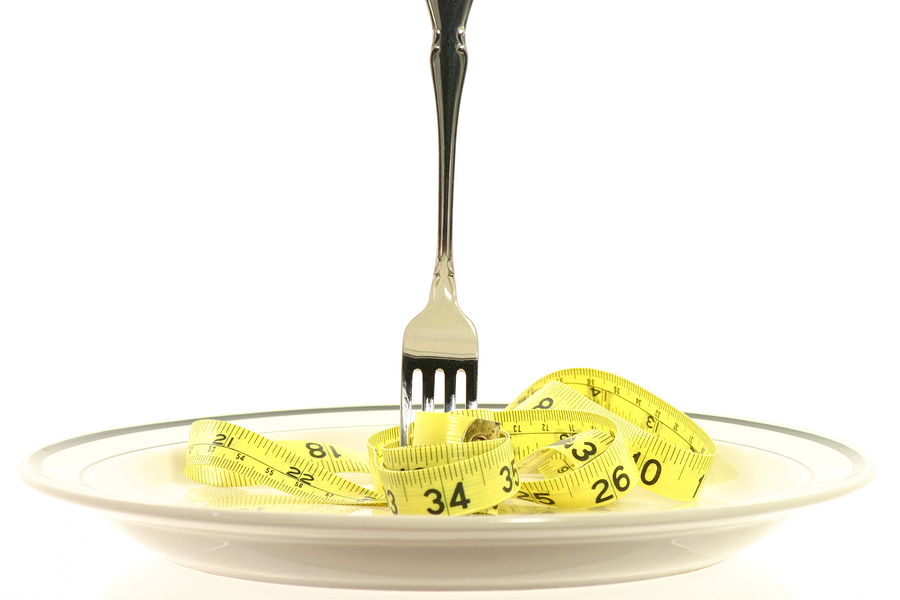Is portion control the secret to a healthy diet?
They say it’s best to have everything in moderation—can cutting down your portion sizes finally help you banish fad diets for good?
Whether it’s low carb schemes like Atkin’s and Paleo, or crazes like the master cleanse, eating according to blood type or blending everything into ‘baby food’, we’re continually inundated with the latest, greatest fad diet.
But despite the growth of these so-called solutions, one overarching truth remains: we’re fatter than ever before. A recent study revealed that more Brits are either obese or overweight than at any other time in the past three decades.
Clearly, trendy diets designed for quick results haven’t made us any healthier in the long term. Maybe it’s time to get back to basics.
Health vs. vanity
In order to approach weight loss logically, it helps to remember the main reason you’re trying to lose weight: your health! You may be dying to squeeze back into your favourite jeans, but your biggest concern should be how obesity puts you at a greater risk of heart disease, diabetes, cancer, liver disease and many more life-threatening conditions. Fad diets are a quick fix for superficial insecurities, but it’s time to get serious.
The science of portion control
Why does portion awareness matter? At a basic level, when you overeat, you consume more calories than your body needs. Those excess calories lead to weight gain. That’s the cold, hard truth.
As Cornell University food psychologist Brian Wansink explains, our careless eating habits cause us to regularly eat 100-200 calories more than we need at each meal. If you pay attention to your body, it will naturally tell you when enough’s enough. But too often we ignore our what our bodies are telling us and eat “mindlessly”.
Our subconscious decision to overeat is driven by our brain’s limbic system—the part that supports emotion, motivation and behaviour. Too often, our limbic impulses win against our brain’s ability to make conscious, analytical decisions. Why? Because we don’t think, we just eat. Being more intentional with your meals and considering long-term consequences of overeating is the first step towards achieving a healthier weight.
Snacks aren’t the enemy
Although snacking mindlessly is an obvious no-no, you don’t have to write snacking off completely. If you’re hungry between meals, don’t be afraid to grab an apple or snack on a handful of almonds. You may have been raised in a strict no-snacking household, but experts now say that a light snack may actually stop you from overeating at mealtime.
OK, so what are the proper portion sizes?
In order to visualise what a healthy portion size looks like, Guard Your Health recommends comparing food items to certain parts of your hand. For example:
- Meat: 3 ounces (about the size of your palm) = one portion
- Butter for your toast: 1 teaspoon (about the size of your fingertip) = one portion
- Ice cream: 1 cup (about the size of a clinched fist) = one portion
Additionally, this comprehensive portion guide covers wide range of foods and the number of portions for each food group you should eat each day. For example:
- – Cereal: 9 tablespoons (about the size of a tennis ball) = three portions
- – Bread: 2 slices = two portions
- – Hard cheese: 30g (size of a small matchbox) = one portion
Reading up on what constitutes a portion, and how many portions of different foods you should eat a day, will give you the information you need to keep your portion sizes in check.
Do you think portion sizes have gotten bigger over time?
Rachel - Silversurfers Assistant Editor
Latest posts by Rachel - Silversurfers Assistant Editor (see all)
- Warming Soups - November 15, 2024
- What’s your favourite scary film? - October 26, 2024
- Easy Traybakes for National Baking Week - October 14, 2024
- Practical tips for living with arthritis - October 11, 2024
- 10th October is World Mental Health Awareness Day - October 8, 2024





















